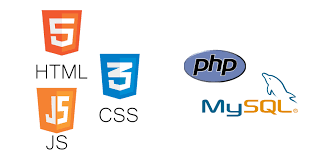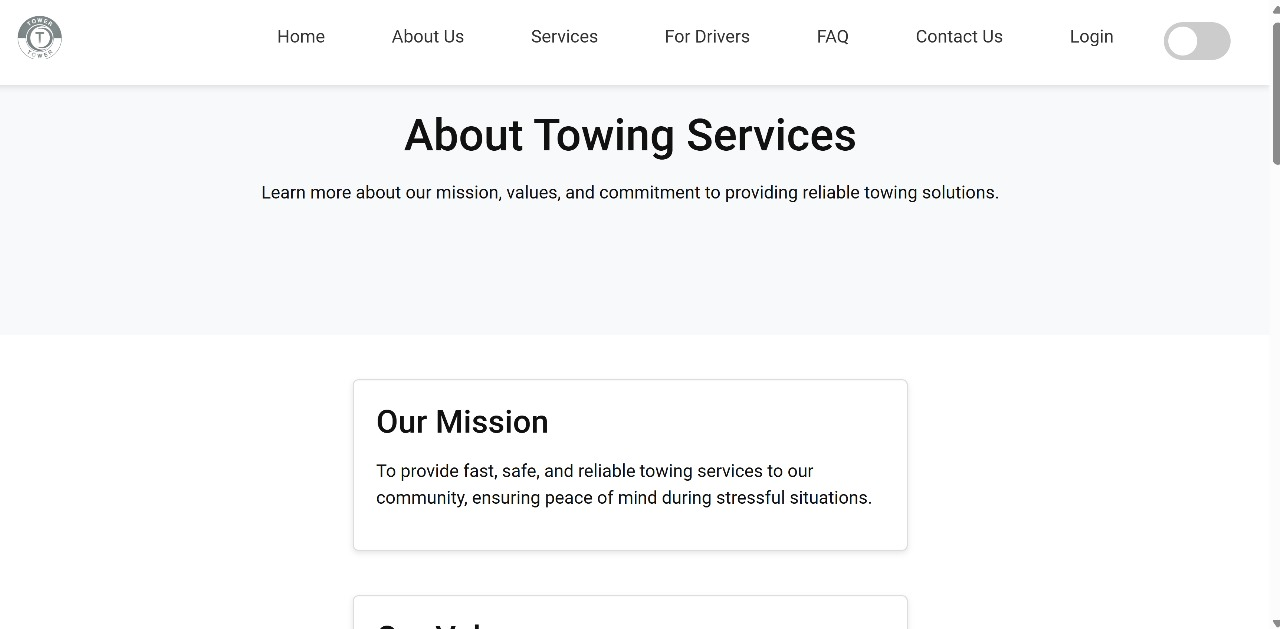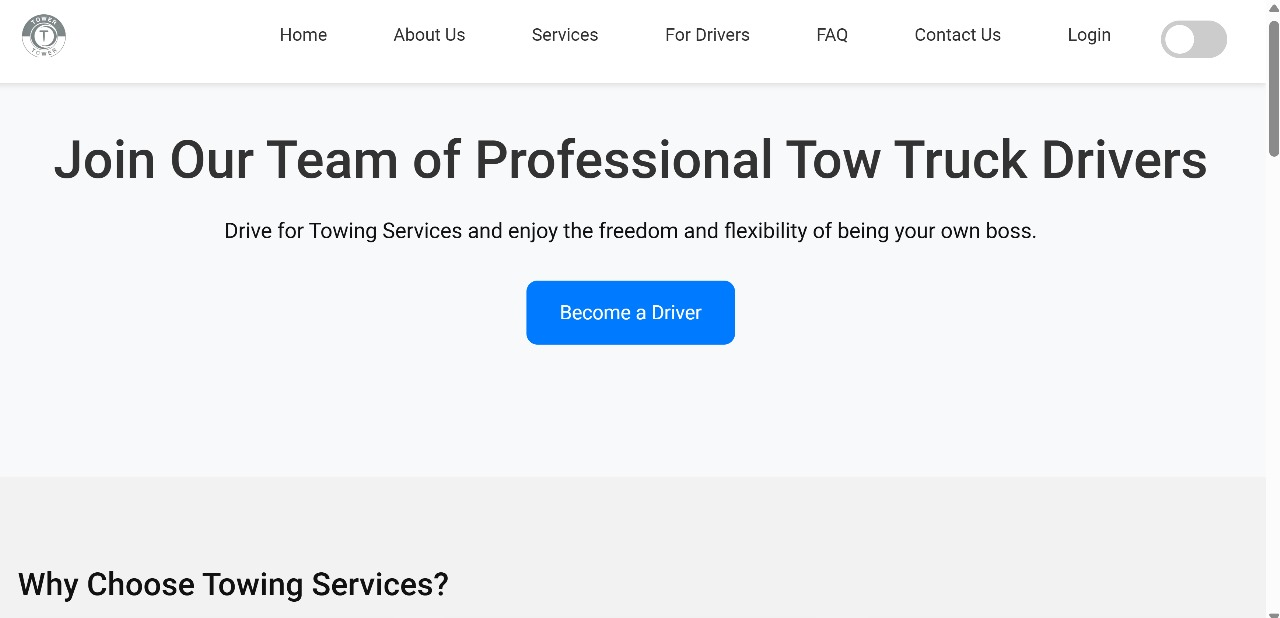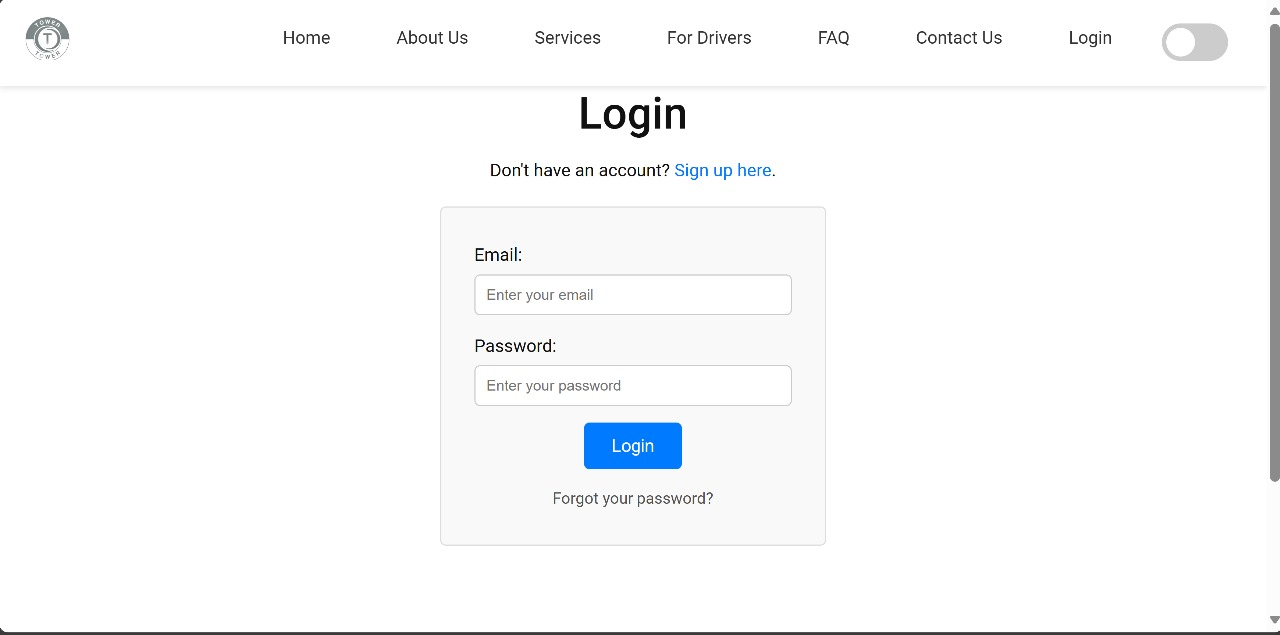Ijraset Journal For Research in Applied Science and Engineering Technology
- Home / Ijraset
- On This Page
- Abstract
- Introduction
- Conclusion
- References
- Copyright
Comprehensive Towing Services Online
Authors: Ketan Tajne, Abhijeet Takale, Mangesh Tale , Swaraj Patil , Swastik Jha , Swayam Kanoje , Rahul Waikar
DOI Link: https://doi.org/10.22214/ijraset.2024.64944
Certificate: View Certificate
Abstract
This project aims to streamline and enhance the towing service experience through the development of a comprehensive web-based platform. Utilizing JavaScript, HTML, CSS, XAMPP, phpMyAdmin, and SQL, the platform offers a user-friendly interface that facilitates efficient towing services. JavaScript ensures dynamic client-side interactions, while HTML and CSS provide a clean and intuitive layout. XAMPP serves as the local server environment, and phpMyAdmin manages SQL database interactions. The backend, powered by SQL, securely handles user data, service requests, and provider details. Users can easily request towing services, track their status, and access service history, while providers can manage their fleet and respond to requests efficiently. This project represents a significant advancement in the towing service industry, offering a seamless solution that benefits both users and service providers through its robust technological foundation.
Introduction
I. INTRODUCTION
The towing service industry plays a critical role in maintaining the safety and efficiency of road networks by providing essential services such as vehicle recovery, roadside assistance, and transportation of disabled vehicles. Despite its importance, the industry faces numerous challenges, including fluctuating demand, operational inefficiencies, and evolving customer expectations. This research paper aims to explore the dynamics of the towing service industry, analyze current operational practices, and identify opportunities for improvement and innovation.
In recent years, advancements in technology and increasing consumer reliance on automotive travel have significantly impacted the towing service landscape. With the proliferation of smart vehicles and the growing adoption of digital platforms for service requests, the industry is at a pivotal point where traditional practices must adapt to new realities. Understanding the factors that influence the efficiency and effectiveness of towing services is crucial for enhancing service delivery and customer satisfaction.
This study examines key aspects of the towing service industry, including response times, fleet management, customer satisfaction, and the integration of technological solutions. By analyzing data from various towing companies, surveying customer experiences, and reviewing industry best practices, this research seeks to provide a comprehensive overview of the current state of the industry and propose actionable recommendations for service providers.
The findings of this research are expected to contribute to the development of more efficient and customer-centric towing services, ultimately benefiting both service providers and the communities they serve. As the industry continues to evolve, it is essential to embrace innovation and continuously strive for operational excellence to meet the growing demands and expectations of modern consumers..
II. LITERATURE REVIEW
-
- Hadinata, Septian, Muhsina, and Sugiantoro (2015) developed a Towing Car Booking System integrating Android and web applications to streamline towing service bookings. The user-friendly system features real-time tracking and efficient backend management. It enhances service efficiency and customer satisfaction, reducing wait times. The study suggests future improvements, such as automated payments and advanced tracking, highlighting its potential for broader application and further research.
- Dr. Rupali Rajesh's 2016 study compares Ola and Uber customers in Mumbai, focusing on user preferences and satisfaction. It highlights key factors influencing customer choice, such as pricing, service quality, and convenience. The study reveals distinct customer demographics and preferences for each service, providing insights into the competitive dynamics between Ola and Uber in Mumbai's ride-hailing market.
- R. T.'s 2014 case study on Prime Cab, published in the International Journal of Advance and Innovative Research, explores the operations and customer service strategies of the taxi service in Guwahati. The study examines Prime Cab's business model, competitive advantages, and challenges. It highlights the company's efforts to enhance customer satisfaction and operational efficiency, offering insights into its market position and growth potential in the local transportation industry
- Vinod Kumar Bishnoi's 2019 study examines cab aggregators Ola and Uber in India, focusing on their market strategies, user experiences, and competitive dynamics. The research analyzes factors such as pricing, technological innovations, and service quality that influence consumer preferences. It provides insights into the operational challenges and growth prospects of both companies, highlighting their impact on the Indian transportation sector
- Ashish Awasthi's 2019 study, published in the International Journal of Research in Business Studies, explores the intangible dimensions of service quality and their impact on customer satisfaction with Ola Cabs in Delhi NCR. The research identifies key factors such as reliability, responsiveness, and empathy, demonstrating their significant influence on customer satisfaction. The study provides valuable insights into enhancing service quality to improve overall customer experiences in the ride-hailing industry.
III. METHODOLOGY
This section outlines the methodology employed to develop and evaluate the comprehensive web-based towing service platform. The platform integrates various software components to facilitate user interactions and service management.
A. System Architecture
The system architecture comprises a client-side interface, server-side logic, database management, and a local development environment. Each component is integral to the platform's functionality..
B. Client-Side Interface
HTML and CSS : Used to structure and style the web pages, providing a clean, intuitive, and responsive user interface.
C. Software Development
Mobile application : Launching of mobile app for more better customer experience and user interaction with more user friendly UI and better features for drivers and customers.
D. Javascript
Adds interactivity and dynamic content to the web pages, handling client-side validation, asynchronous data fetching, and interactive elements.
E. Server-Side Logic
XAMPP: Serves as the integrated development environment, providing a local server solution (Apache) to host the application during development and testing. Includes PHP and MySQL components for server-side scripting and database interactions.
F. Database Management
phpMyAdmin and SQL: Used for managing the SQL database, which stores user information, service requests, and provider details. SQL queries perform CRUD operations, ensuring secure and efficient data handling.
G. Development Workflow
XAMPP Integration: The platform is developed and tested locally using XAMPP. PHP scripts handle server-side logic, process user requests, and interact with the SQL database via phpMyAdmin, allowing for rapid development and deployment.

Fig 1. About Software Used
H. User and Provider Functionality
User Interface: Users can request towing services, track their status, and view service history through a seamless, intuitive interface. JavaScript enhances user interaction with real-time updates.
I. Data collection and Processing
Data Collection: Data from user interactions, such as service requests and feedback, will be continuously captured to improve the platform's functionality and user experience.
J. Service Request Recognition Algorithm
The recognition algorithm employs a combination of threshold-based analysis and pattern recognition to match user requests with the appropriate service provider, ensuring prompt and accurate service delivery.
K. Output Generation
Upon recognizing a service request, the corresponding details are displayed on the user's interface and sent to the service provider for action.
L. Testing and Validation
The system is tested under various conditions to assess its accuracy and reliability. This includes tests with multiple users and in different environments. User feedback is incorporated to refine the platform and algorithms, ensuring a robust and user-friendly service.

Fig 2. Output Generation
IV. RESULTS AND DISCUSSIONS
The towing services site developed using the outlined methodology represents a significant breakthrough in enhancing the towing service experience for both users and providers. The integration of various software components, including the client-side interface, server-side logic, and database management, has resulted in a cohesive and efficient platform that delivers a user-friendly and responsive solution.
The successful development and implementation of the towing services site demonstrate the effectiveness of the adopted methodology. The seamless integration of the client-side interface, server-side logic, and database management has created a comprehensive and integrated web-based platform that addresses the needs of both users and service providers. The use of technologies such as HTML, CSS, JavaScript, XAMPP, PHP, MySQL, and SQL has facilitated a robust and scalable solution, ensuring a smooth and responsive user experience with GPS tracking.
 Fig 3. Result and Discussion
Fig 3. Result and Discussion

Fig 4. Result and Discussion
V. FUTURE SCOPE
The towing service industry is poised for significant transformation in the coming years, driven by technological advancements, changing consumer expectations, and evolving regulatory landscapes. The future scope for Towing Service includes several key areas of development:
A. Integration of Advanced Technologies
Telematics and IoT: Implementing telematics and Internet of Things (IoT) technology can enhance fleet management by providing real-time tracking, predictive maintenance alerts, and optimizing routes for faster response times.
AI and Machine Learning: Leveraging AI and machine learning can improve dispatch efficiency, predict peak demand periods, and enhance customer service through chatbots and automated systems.
B. Enhanced Customer Experience
Mobile App Development: Creating a user-friendly mobile app that allows customers to request services, track tow trucks in real-time, and receive instant updates can greatly improve customer satisfaction and engagement.
Personalized Services: Using data analytics to offer personalized service recommendations and loyalty programs based on customer history and preferences.
C. Expansion of Services:
Comprehensive Roadside Assistance: Expanding services to include not only towing but also roadside repairs, battery replacements, and emergency fuel delivery.
Specialized Towing Services: Offering specialized towing services for luxury vehicles, motorcycles, and heavy-duty trucks to cater to a broader market.
D. Data-Driven Decision Making
Analytics and Reporting: Utilizing big data analytics to monitor performance metrics, customer feedback, and market trends to make informed decisions and improve service quality.
Predictive Analysis: Employing predictive analytics to anticipate market changes, customer needs, and operational challenges.
Conclusion
Data-driven decision-making, through analytics and predictive analysis, is crucial for monitoring performance, understanding customer needs, and anticipating market changes. Ensuring regulatory compliance and maintaining high safety standards through continuous training and certification programs will uphold the industry’s reputation and reliability. In conclusion, the future of the towing service industry lies in embracing innovation and focusing on customer-centric strategies. By implementing the recommendations discussed in this paper, towing service providers can improve operational efficiency, enhance customer satisfaction, and position themselves as leaders in a rapidly evolving industry. Continued research and development will be essential to navigating the challenges and opportunities that lie ahead, ensuring that the towing service industry remains a vital component of road safety and vehicle recovery.
References
[1] Hadinata, Septian & Muhsina, Elvania & Sugiantoro, Bambang. (2015). Towing Car Booking System Using Android and Web Based Application. IJID (International Journal on Informatics for Development). 4. 29. 10.14421/ijid.2015.04105. [2] DR. Rupali rajesh, s. c. (2016). A comparative study of ola and uber customers in mumbai. mumbai: Vivekanand education society. [3] T, R. (2014). A case study on prime cab. guwahati: international journal of advance and innovative research. [4] Vinod Kumar Bishnoi, R. B. (2019). Cab aggregators in india: A study of ola and uber. Bangalore: Ulrich\'s Periodicals Directory [5] Mr. Ashish Awasthi, \"Intangible Dimension of Service Quality and its Relationship with Customer Satisfaction: Ola Cabs in Delhi NCR”, International Journal of Research in Business Studies ISSN: 2455-2992, Vol. 4 (1), June. 2019.
Copyright
Copyright © 2024 Ketan Tajne, Abhijeet Takale, Mangesh Tale , Swaraj Patil , Swastik Jha , Swayam Kanoje , Rahul Waikar . This is an open access article distributed under the Creative Commons Attribution License, which permits unrestricted use, distribution, and reproduction in any medium, provided the original work is properly cited.

Download Paper
Paper Id : IJRASET64944
Publish Date : 2024-11-02
ISSN : 2321-9653
Publisher Name : IJRASET
DOI Link : Click Here
 Submit Paper Online
Submit Paper Online

